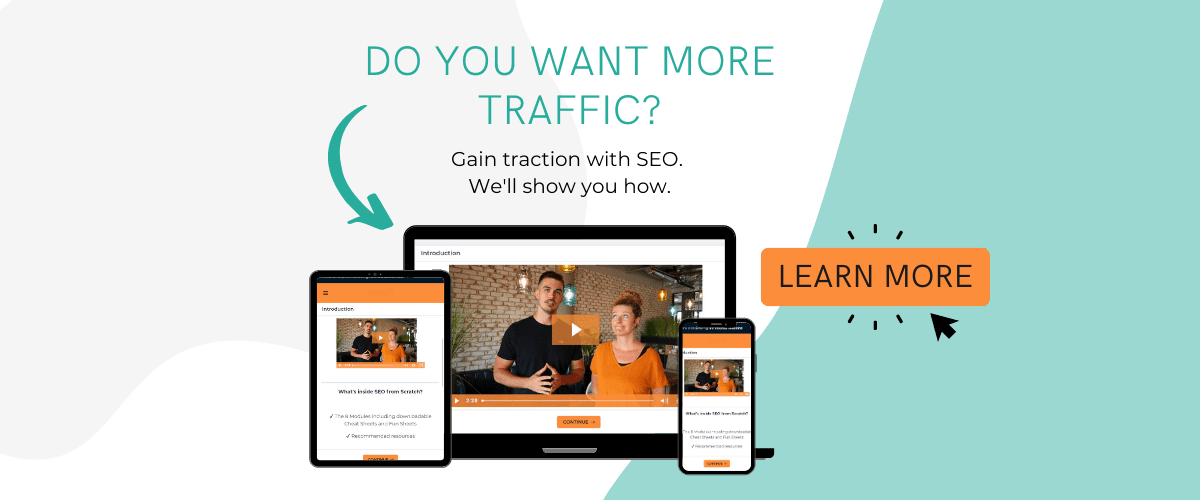Looking for handy blog content writing tips for beginners? Writing content can become an easy habit when you find a routine you love.
I used to write when “I felt like it” – and sadly, it wasn’t often enough. After experimenting with different content writing strategies for several years, I finally found something that works and I’m excited to share my content writing tips with you.
Spoiler: It’s about having a blog writing routine.
In this post, you’ll find the exact same routine I use for writing content. I write 4 to 5 blog posts per week – thanks to this routine.
Obviously, blogging is not all about writing content – and since I run multiple blogs, I manage to write 4-5 blog posts in just a few hours per week.
Before we start, let’s take a minute to see what content writing is if you’re just starting out.
What’s Content Writing?
A content writer (or a blogger) is someone who creates content for the web. The content should include keywords so that it’s optimized for search engines.
A search engine is a system (like Google) that is designed for web searches. When you enter a query in a search bar, the search engine filters the results so that you can find the answer to your question/query.
If we put these two definitions together, we would get something like this:
Great web content answers a query and includes keywords so that people can find the information they are looking for on search engines.
That said, content writing is not creative writing. It’s about “user intent” and “keywords”.
If you’re still new at writing web content, this may all sound confusing, so here’s an example.
You’re on Google and you are searching for “content writing tips for beginners”. Your intention is to find tips so that you can write better content fast. You’re searching for information.
You will likely click on a result that includes “content writing tips for beginners” in their title – you wouldn’t click on something called “marketing strategies for fast-food restaurants”.
User intent: Your intention is to find tips so that you can write better content fast. You’re searching for information.
Keywords: content writing tips for beginners, web content writing tips, SEO content writing tips, content writing guide for beginners.
When you use keywords in your content, it tells Google and your readers what your content is about.
Without further ado, let’s start with my content writing routine.
Write Down Content Ideas
If you’re like me, you probably come up with content ideas all the time. If you don’t and need inspiration, you can read our guide on how to come up with blog post ideas.
I usually write my ideas down so that I don’t forget them. I’ll go through the list later on, so I don’t get distracted with ideas.
I use the sheet in my blogging tracker to write down all my ideas. You can grab it here.
Find Your Writing Momentum
Over the years, I realized that I’m more productive in the morning. Now, I start every week day with a writing session of 90 minutes. It’s the first thing I do when I turn on my laptop. I get a sip of coffee and I take a look at my blog post ideas and see what inspires me that day.
To help me focus, I turn on a Pomodoro App that I set for 90 minutes, so that I can see how much time has passed. Sometimes, I manage to write faster, and sometimes it takes me a bit longer – but I try to do it all in one go.
Writing in the morning helps me write faster and better because I’m energized and focused. I just can’t write in the afternoon because I get too tired and it takes me a lot longer to get a blog post done.
Once I’ve picked the topic, I do keyword research.
Start with Keyword Research
There are two options for keyword research.
- You can batch your keyword research once a week – which I do for my team of writers. When I do so, I go through the list of content ideas and I filter out the ones that have no volume of search or ones that are too competitive.
- You can do keyword research before you start writing. (And yes – I include this step in my 90-minute timeframe for writing.)
For example, this morning when I started writing this blog post, I went on Keysearch to do keyword research. It took me around 15 minutes to look for keywords to include in my content, to look at the competition, and to come up with a content outline.
At first, it may take you longer, but I’m quite fast with these steps now since I’ve been doing it for years.
If you don’t know how to conduct keyword research, check out this Keysearch guide or consider joining my SEO course.
Write a Content Outline
The next step is to look at the competition and write down the blog post outline. I mentioned this above, but let me explain.
When doing the keyword research, I look at the results on the first page of Google for the main keyword. You can find these results directly on Keysearch or you can head to Google to find them.
When looking at the competition, I look at the way they structured their content, what’s missing, what I like, etc. I check their word count with the Chrome Extension WordCounter and I come up with an average word count to target.
Then, I start writing the blog post outline using this template.
I make sure that the outline and the headlines make sense and that it’s easy to scan. My goal is to write down an outline that can beat the competition.
Finally, I can start writing.
Write Content with Your Ideal Reader in Mind
Starting at an outline is easier than staring at a blank page. This is why writing is faster when you use an outline – you’ll know exactly what to write.
I write simple words – and I keep it simple. I like examples – so I write examples. Over the years, I developed a voice and I tried to be consistent with it – so I write to my ideal reader. Most of the time, her name is Matilda and I pretend I’m having a conversation with her.
For example, this piece is targeting beginners, so I tried to keep it as simple as possible. I added examples and I linked to other resources that you could need in order to become a great content writer.
Finally, I take a break before editing.
Edit or Send it to Editor
Back in the day, I used to walk away from my blog post for a day before editing. The thing is – I’m not a native English speaker, and I truly dislike editing my own writing. So, I have a virtual assistant that helps me with editing.
Every morning, when I’m done with my writing session, I send the article to her without rereading it. I know that she’ll take care of it.
If you’re on your own, take some time away from your content before editing it. You could also read your content out loud to make sure it sounds natural.
Final Thoughts On Content Writing For Beginners
Writing web content will become easier with practice. I personally realized that my morning writing routine is the only way to stay consistent with content and I’m able to deliver better content this way.
Today, it took me one hour to do keyword research, write an outline and write this blog post. There’s no fluff and it’s actionable.
Want to become more productive with your blogging schedule? Grab a copy of my blogging tracker. It includes a schedule, a sheet to write down your blog post ideas and an income/expenses tracker.
Make sure to take a look at these blogging tools to increase your productivity too.
Want to learn more about blogging? Read one of the following blog posts:



